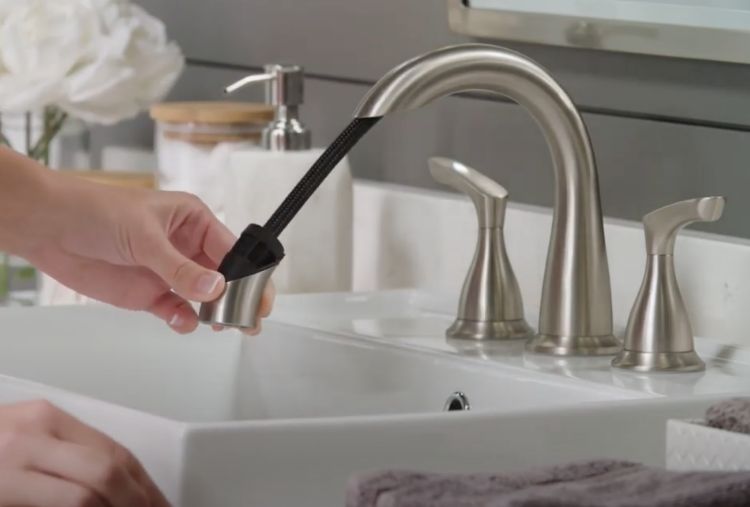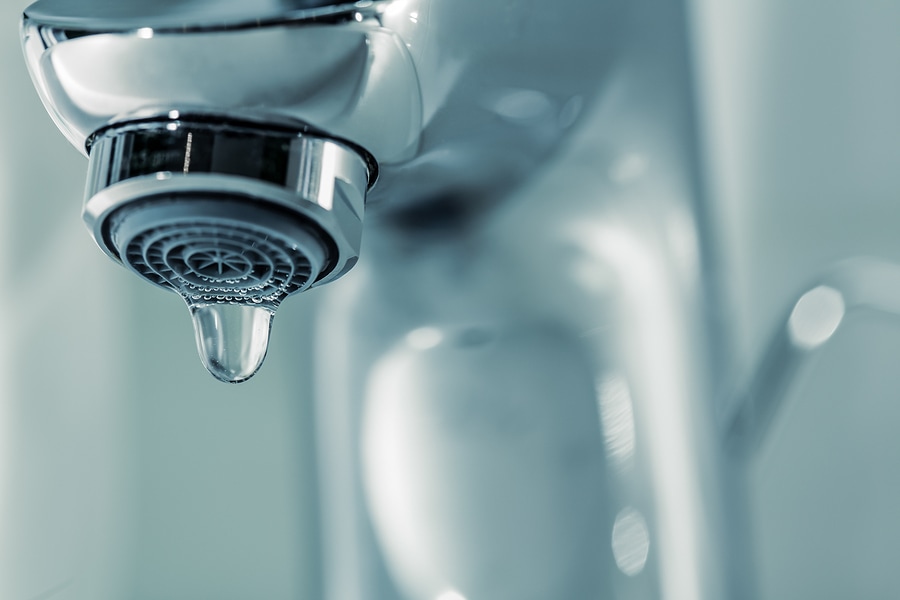Our Explanations Behind Dealing with a Faulty Faucet
Our Explanations Behind Dealing with a Faulty Faucet
Blog Article
Listed here below you will find more brilliant expertise concerning Why It's Important to Fix Leaky Faucets.

Trickling taps could feel like a minor trouble, yet their impact goes beyond simply the annoyance of the audio. From drainage to sustaining unnecessary economic prices and health and wellness risks, overlooking a leaking faucet can cause different consequences. In this article, we'll look into why it's vital to address this usual home issue promptly and properly.
Waste of Water
Environmental Impact
Leaking taps contribute significantly to water wastefulness. According to the Environmental Protection Agency (EPA), a solitary faucet leaking at one drip per second can waste more than 3,000 gallons of water each year. This not only strains water sources but likewise influences communities and wild animals depending on them.
Financial Costs
Boosted Water Expenses
Past the ecological influence, trickling faucets can blow up water bills significantly. The gathered wastefulness gradually converts into greater utility expenses, which might have been stayed clear of with prompt repairs.
Potential Residential Property Damages
Moreover, long term trickling can cause damage to fixtures and surface areas surrounding the tap. Water build-up can cause discoloration, rust, and even structural concerns if left ignored, causing extra repair prices.
Wellness Issues
Mold And Mildew and Mildew Development
The constant visibility of dampness from a leaking tap creates an optimal environment for mold and mildew development. These fungis not just endanger interior air high quality however also pose health threats, specifically for people with breathing conditions or allergies.
Waterborne Conditions
Stationary water in leaking faucets can come to be a breeding ground for germs and other pathogens, raising the danger of waterborne diseases. Impurities such as Legionella germs prosper in stagnant water, possibly resulting in significant diseases when consumed or inhaled.
DIY vs. Specialist Repair service
Pros and Cons of Do It Yourself Repair
While some might try to take care of a dripping faucet themselves, do it yourself fixings come with their very own collection of challenges. Without correct expertise and devices, DIY efforts can exacerbate the issue or bring about incomplete fixings, prolonging the problem.
Advantages of Working With a Professional Plumber
Hiring a specialist plumber makes sure that the underlying cause of the leaking tap is dealt with effectively. Plumbing technicians possess the know-how and equipment to detect and repair tap issues successfully, saving time and minimizing the threat of more damages.
Step-by-Step Overview to Taking Care Of a Dripping Faucet
Tools Called for
Prior to attempting to repair a dripping tap, gather the required devices, including an adjustable wrench, screwdrivers, substitute parts (such as washing machines or cartridges), and plumber's tape.
Typical Tap Issues and Their Solutions
Determine the sort of faucet and the details problem causing the drip. Usual issues consist of damaged washing machines, rusty valve seats, or malfunctioning O-rings. Refer to maker instructions or on the internet tutorials for step-by-step support on repairs.
Preventive Measures
Normal Upkeep Tips
To prevent dripping faucets, do regular upkeep such as cleansing aerators, inspecting for leaks, and changing damaged parts immediately. In addition, take into consideration mounting water-saving tools or upgrading to extra reliable components.
Value of Prompt Repair Works
Addressing dripping taps as quickly as they're observed avoids further water wastefulness and possible damage, ultimately saving both water and cash over time.
Impact on Residential Property Value
Assumption of Well-Maintained Residential Property
Maintaining a residential or commercial property in good condition, consisting of dealing with upkeep issues like leaking faucets, boosts its perceived value and charm amongst prospective customers or tenants.
Influence on Resale Worth
Properties with well-kept plumbing components, consisting of taps, command higher resale values in the realty market. Resolving trickling taps can add to a favorable perception during residential property assessments and settlements.
Ecological Obligation
Individual Payment to Conservation
Taking duty for fixing dripping faucets aligns with more comprehensive efforts towards water preservation and environmental sustainability. Every person's activities jointly make a significant effect on protecting priceless sources.
Lasting Living Practices
By focusing on punctual fixings and taking on water-saving habits, individuals add to lasting living techniques that profit both present and future generations.
Conclusion
Dealing with a dripping faucet surpasses plain comfort; it's a crucial action toward saving water, decreasing economic prices, and protecting health and home. Whether through do it yourself repairs or specialist support, doing something about it to take care of trickling faucets is a small yet impactful way to promote accountable stewardship of resources and add to a healthier, extra sustainable future.
How to Fix a Leaky Faucet: Step-by-Step Repair Guide
A leaky faucet may seem like a simple annoyance, but if it's not fixed promptly, that leak could cost hundreds to potentially thousands. From water damage to mold, mildew, and high water bills, even a tiny leak can be catastrophic if left unattended. Damage like this can even affect the overall value of your home, so it's important to take the right approach for leaky faucet repair. You may need the help of a plumber in some cases, but we've got a few tips you can try on how to fix a leaky faucet before calling the pros.
Four Faucet Types
When you're learning how to fix a leaky faucet, the first step is knowing what kind of faucet you're working with! There are four common types.
Cartridge Faucets
Cartridge faucets come in one- or two-handled varieties. In one-handled cartridge faucets, hot and cold water combines in a single cartridge. In the two-handled versions, hot and cold water are controlled separately and mixed in the faucet.
Ball Faucets
Ball faucets have a single lever you push up and down to adjust the pressure and rotate to change the temperature. A slotted metal ball controls the amount of water allowed into the spout.
Compression Washer Faucets
They're the oldest type of faucet, but they're still used in many homes — especially older ones. Compression faucets have two separate handles that, when turned, raise or lower the washer that seals a water valve. This valve stops water from flowing through the faucet when it is turned off.
Disc Faucets
Disc faucets rarely need to be repaired due to their maintenance-free design. The water flow is controlled by two discs — the upper one raises and lowers against a fixed lower disc, creating a watertight seal. If your disc faucet starts leaking, you may need to replace the seals or clean residue buildup from the inlets.
Fixing a Leaky Faucet
Step 1: Turn Off the Water
Whether you're learning how to fix a leaky bathtub faucet or how to fix a leaky kitchen faucet, always turn off the water supply to your working area when you're fixing a leak. The last thing you want is a flood added to your list of things to fix.
Look for the shutoff valves below your sink or around the tub and turn them clockwise to stop the water flow. If your faucet doesn't have shutoff valves, you may need to turn off the water for the whole house. Check to make sure it's off by turning the faucet on. If nothing comes out, you're ready to start the repair.
Step 2: Take Apart the Faucet
How you disassemble your faucet depends on the type of fixture you have. You can use a flathead screwdriver to remove the caps on top of the handle or handles for cartridge and compression faucets. Inside, you should see handle screws. Unscrew these with a screwdriver to remove the handle.
Disc- and ball-style faucets will typically have an inlet screw near the handle, and removing that will reveal the interior of the faucet.
Detach the Valve Stem
For cartridge- and compression-style faucets, you'll see the inner valve stem or cartridge once you remove the faucet handles. If you have a compression faucet, unscrew the brass valve stem. If you have a cartridge faucet, pull out the cartridge. If your cartridge has been in place for a while, it may require some tools or extra force to remove it due to mineral deposits.
Examine and Replace Parts
Once you've removed the parts, check them out to confirm what needs to be replaced. You may see corroded rubber washers, O-rings, stems, or cartridges. On a ball-style faucet, check the seats and springs for damage.
If you need to repair a leaky disc faucet, check the inlet and seals on the lower disc.
Once you determine what parts must be replaced, visit your local hardware store. Bring the damaged parts with you to ensure you can purchase the correct components to replace them.
Clean Valves and Faucet Cavity
If you've removed a stem or cartridge, you may notice mineral buildup in the faucet's threads. Use white vinegar to clean the valve seat by soaking it for a few minutes, then scrub it away with a soft toothbrush and rinse with warm water. You can also clean the interior of the faucet in the same way.
Reassemble the Faucet
Once your faucet is cleaned and the required parts have been replaced, it's time to reassemble it. Put the pieces back together and slowly turn the water supply back on. Doing this slowly is crucial because too much initial water pressure can damage the new hardware you've just installed.
https://homewarranty.firstam.com/blog/how-to-fix-leaky-faucet

I'm very occupied with 4 Common Reasons for a Leaky Faucet and I'm hoping you enjoyed our blog post. Do you know another person who is fascinated with the niche? Take a moment to promote it. Many thanks for your time. Kindly pay a visit to our blog back soon.
Report this page